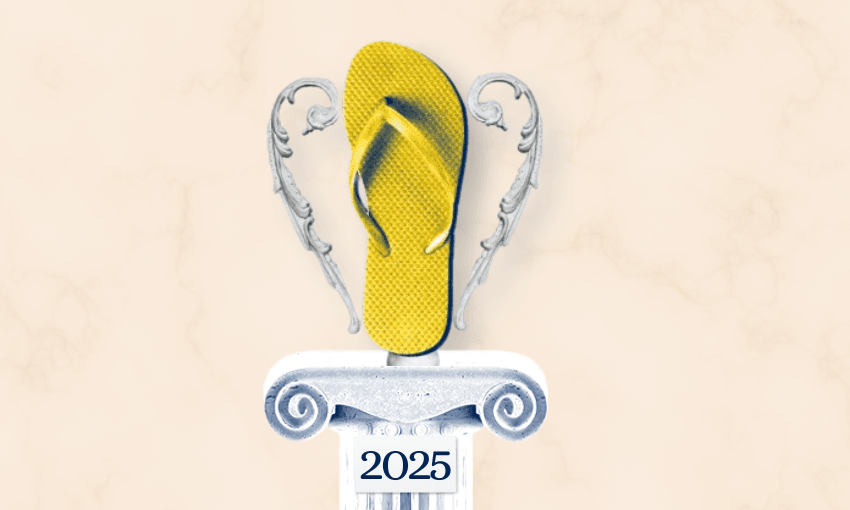The leader of the opposition didn’t do as badly on Q&A as everyone says, argues Liam Hehir, but he could’ve been better.
Opponents of the National Party were pretty smug over Christopher Luxon finding the going tough in his interview with Jack Tame on Q&A last weekend. I’m not sure who would have expected anything different, however. Tame is a tough interviewer despite his cheery and friendly manner.
The intense partisans of Twitter are convinced that Tame took Luxon to the woodshed. Overall, however, he really didn’t do so badly. He was certainly no worse than Jacinda Ardern has been whenever she has been grilled by Tame. Which is not to say that it went swimmingly for the leader of the opposition.
Tame challenged Luxon to justify his view that government waste is exacerbating inflation. He struggled to parry the (mistaken) assumption that all spending is equally inflationary. Luxon should have been faster to make the point that good spending helps the economy to produce more goods and services whereas wasteful spending increases demand without assisting production.
When the government spends $51 million to not build a bridge, that’s inflationary. Spending money on a new hospital that increases the provision of necessary services does not have the same effect. Luxon never made that point succinctly enough. The best he managed was a riposte to Tame for not considering $100 million to be a lot of money.
But in any event, it’s not clear that having to contend with Tame’s doggedness on those types of questions really hurts an interviewee. Economic issues are complicated, and economists disagree about cause and effect all the time. With respect to both politician and interviewer, uncommitted voters are unlikely to be fully persuaded by the arguments of either.
The same probably cannot be said for questions over National’s promise to abolish the 39% income tax rate for top earners.
The economic case for the rate was never particularly strong. It was introduced for little economic reason and was principally a bone thrown by Labour to those of its supporters disappointed that the party had not been radical enough. As many people predicted, it hasn’t raised a lot of revenue, but it has provided an incentive for those on top incomes to restructure their affairs in ways than minimise the incidence of tax.
As the IRD notes, the policy has simply failed to do what it was supposed to do.
Where Luxon found it hard, and where Tame made the most of his upper hand, was how abolition of the rate would benefit the leader of the opposition personally. Because the prime minister earns a very good salary, abolition of the 39% rate would see whoever holds the role keeping about $18,000 more a year.
Luxon was immediately put on the defensive. Like most New Zealanders, he probably cringes when discussing personal finances. Nevertheless, Tame pushed and Luxon conceded he would benefit, despite not needing it, because high earners pay the greater part of the income tax in this country.
Personally, I think that National should tweak its proposal so that taxpayers can choose to opt-in to the 39% rate. It would be a bit of a novelty for the New Zealand tax system and a few tweaks to the Tax Administration Act 1994 would be needed. There’s no reason in principle as to why those who don’t feel they need tax relief should be forced to take it, however. And Luxon could announce that he will continue to pay at the higher rate.
That would give him an immediate response to bad faith accusations of seeking self-enrichment while preserving the overall intent of the policy. He could also turn the tables on political opponents and interviewers by asking them to make the same pledge. It would be a simple, confident response to a loaded question that he is going to be asked again and again.
That’s not the only way to handle it. Perhaps all he needs is a suite of good, pithy rejoinders. But whatever it is, it’s got to be confident and decisive. All the other stuff Luxon and Tame tangled over are details. People accept that details are uncertain and usually up for debate. Arguments about details rarely deliver an election result.
But people do care about fairness. National should know this. Its policy of tying tax rates to inflation will only deliver modest initial benefits to most voters but is popular nonetheless because it strikes voters as the fair thing to do.
Until Luxon can respond with confidence on that question, he is going to find himself playing defence on this issue time and time again. And not just against Jack Tame. The prime minister and others in the punditry will be asking the same questions.
He could do with some better answers next time.





